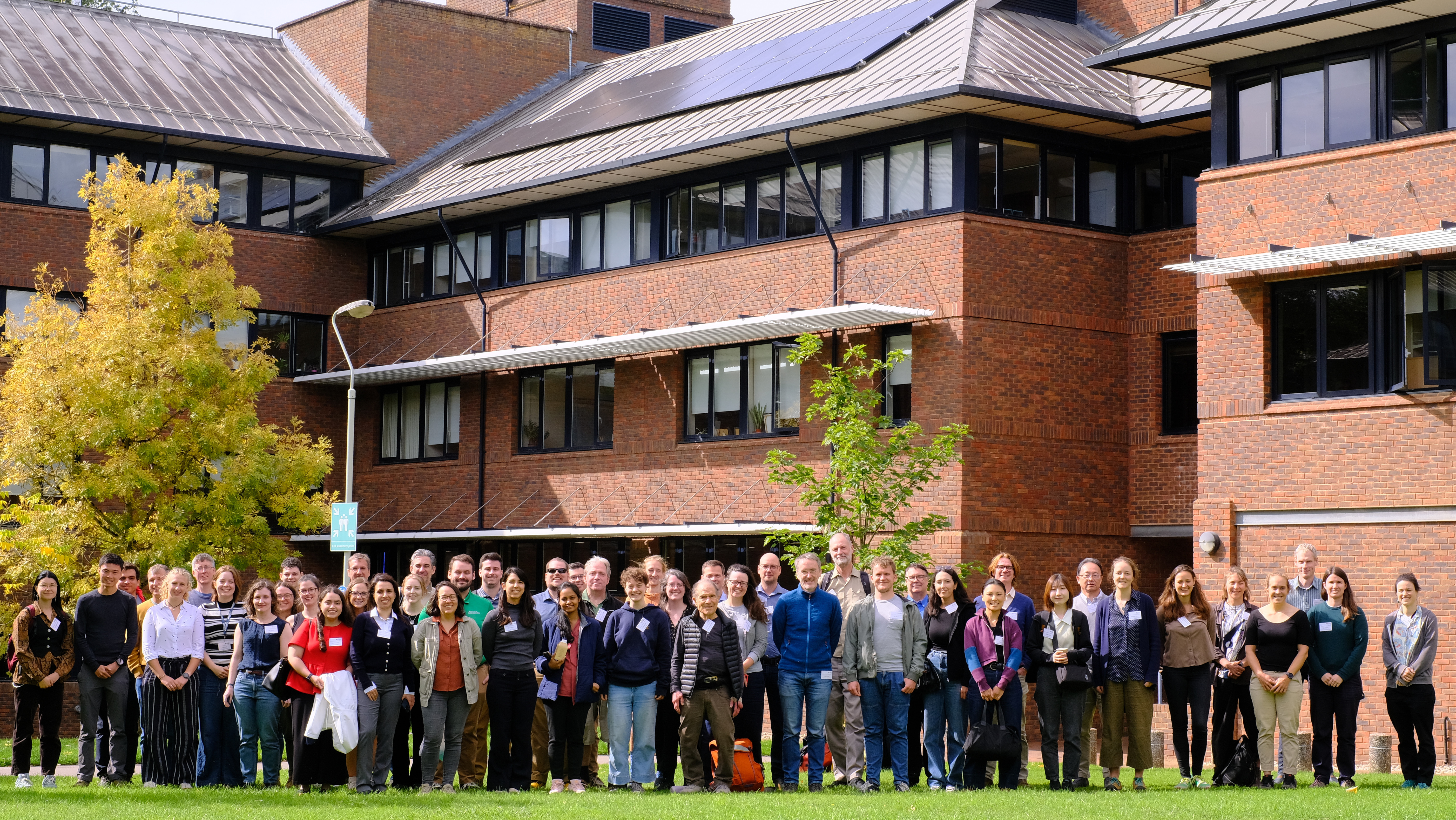

Following the success of the fourth International Summer Snowfall Workshop held in Leipzig in 2023, we organised a fifth workshop this year.
These workshops are a meeting place for a relatively small, focussed community with interests in topics such as:
Programme
The programme is available here. The workshop will start on Monday morning and finish on Wednesday lunchtime.
There will be a reception with food and drink at Reading Town Hall on Monday evening starting at 6:15pm. You can find the Town Hall on Blagrave Street in the town centre. The entrance is by the Town Hall square (look for the statue of Queen Victoria, and the large clock tower) - there will a sign outside the building to show the way.
Refreshments in the form of (tea, coffee, juice, water, snacks) will be provided at various points as indicated on the programme. We will also provide a light lunch (pizza, wraps) at the end of the workshop on Wednesday, for convenience, and to encourage some informal discussions with the speakers of the final session before everyone leaves.
No lunch is provided on Monday or Tuesday. You can either:
- buy something and bring it with you (there are lots of options in the town centre, e.g. Marks and Spencer's food hall, Pret a Manger, ...)
- or you can go across campus on the lunchbreak and buy something from the Co-op grocery store or one of the catering outlets.
Locations of the co-op and food places on campus are on this map, as are the locations of some pleasant places to go and eat a lunch you have brought with you.
Guidance for presenters:
Poster presenters: the poster boards we have available are 1.2m x 1.2m square, and therefore can accomodate an A0 poster in either portrait or landscape orientation. Poster pins will be provided. You can set up your poster any time from Monday morning onwards (including if you are in the Tuesday session). The poster boards are double-sided, so Monday presenters please place your posters on the side facing into the room, Tuesday presenters please place your poster on the side facing the wall, and then on day 2 we will flip the boards around.
Oral presenters: you have approximately 12 minutes available for your presentation, followed by 3 minutes of time for questions. Keynote speakers have 25 minutes + 5 minutes for questions. Please upload your slides here as soon as convenient, and no later than the day before your talk. If you can't use the form, email Chris directly. Suitable formats include powerpoint, PDF, google slides (if you want to use something more rarified, please let Chris know in advance).
Travelling to Reading
Reading is located in southern England, around 50km west of London. To travel to Reading from outside the UK there are two main options:
(1) Train via the channel tunnel. This is an effective way to travel to the UK from western Europe, and has a much lower carbon footprint than flying. Eurostar operate a number of services to and from London St Pancras station. You can find (unofficial) tips and advice on rail travel to/from the UK here. From St Pancras, you can take the London Underground (circle, or hammersmith and city line) to Paddington station, and from here there are numerous fast rail services to Reading (travel time 25 mins or so), as well as a number of slower commuter trains, and the new Elizabeth line.
The Transport for London website can plan your journey from St Pancras to Reading, and has maps of london underground and Elizabeth line trains.
If you are arriving before 0800 on Friday 12th, please note there is strike action taking place, which is likely to severely affect London underground services. More information can be found on the Transport for London website, and you can use their travel planner to find alternatives.
(2) Flying. The easiest airport to access to/from Reading is Heathrow. From Heathrow you can catch a RailAir coach which will take you straight into the centre of Reading (specifically: the railway station). This is much more cost and time effective than going from Heathrow to Reading by train, which involves travelling into central London and then back out again. An alternative is to take a taxi directly from Heathrow to Reading - this may be cost effective if you are travelling as a group.
Alternative airports in the London area include Gatwick and Stanstead. There is a direct commuter train from Gatwick to Reading, which is OK, but a slow journey (1 hour 35 mins). To get to Reading from Stanstead involves a train journey into London and out again.
Please do check visa and passport requirements before you come!
European colleagues please do remember that the UK is not in the EU and it is likely that you will need an electronic travel authorisation (ETA) to travel to the UK; please also realise that a passport is essential for travel to the UK for almost all visitors, you cannot use a national ID card. There is some more information here for EU, EEA and Swiss visitors to the UK, but please also check the advice from your own government webpages on travel to the UK.
Travellers from the USA also need an ETA to enter the UK (which was not previously the case) - thanks to Claire P for pointing this out!
Accommodation
The recommendation is to stay in the centre of Reading while you are visiting. There is a better choice of accommodation in the town centre, and the university campus is easily accessible by bus. We have built in a relatively gentle start time each day to allow time to travel from the centre of town to the department.
There are no specific recommended hotels, but many visitors to the department in the past have stayed in the Ibis Reading Centre and found it met their needs. There are several other options, and you can explore these through the usual routes to find one that suits your needs and budget.
There are lots of restaurants and cafes in the town centre. Some of these are clustered around the "riverside" area adjacent to the Oracle shopping centre, along the Holy Brook channel of the River Kennet. There are also tips on various places to eat on the Edible Reading blog.
For a drink, Zero degrees on Bridge Street is a sort-of microbrewery with quite a bit of choice (they also have a restaurant that serves pizza). If you want real British "ale", The Alehouse on Broad Street is tiny but atmospheric with little "snugs", and the Allied Arms on St Mary's Butts is what we call an old man's pub. If you are younger than that, the Oakford Social Club near the railway station is more lively, and for those who like to stay up late the "Purple Turtle" on Gun Street can accommodate you - just be aware that you need to have photo ID (e.g. your passport) with you to go here after 9pm.
Travel from town centre to the department, and back again
There are frequent bus services that serve the university campus. Reading Buses runs all of these services, and you can find detailed information on their website. Different routes have buses with different colours / decoration:
Buses number 17 (purple) and 4 (lion) stop close to the Earley Gate entrance to campus, which is where the Meteorology department is located. Takes about 10 minutes to walk to the department from the "Three Tuns" bus stop on Wokingham Road. You can catch it from bus stop FN on Friar Street (just outside the Ibis/Novotel), stop EO on Blagrave Street, or stop ME/MF on King's road (there are other stops - see Reading Buses for details). The return bus stop is just on the opposite side of the road from where you got off.
Routes 19a,19b,19c (little oranges) are less frequent, but there is a bus stop directly at the Earley Gate entrance to campus. About 5 minutes walk to the department. You can pick this bus up from Station Road stop SA (outside the railway station) or Kings Road stop MF (just past the Reading central library). Get off at the "Earley Gate" bus stop. The return stop is just on the opposite side of the road from where you got off.
You can also take the 21 (claret) which stops in the centre of the Whiteknights campus. Here it is a pleasant (if it's not raining!) 15 minute walk to the department. You can pick this bus up from outside the railway station (bus stop EK, just next to where the RailAir coach stop is). Get off at the "University of Reading Whiteknights House" stop. The return stop is nearby on "Chancellors Way"- look for the large bus shelter.
You can pay for your ticket using a card/phone, or using cash (exact change only). A single ticket is £2.70, an all-day ticket is £5. There is also an app which you can use, or you can "tap on and tap off" with your card - the prices for those high-tech options are very slightly cheaper. More details on fares here. If you have an all day ticket, you can use it on any of the above routes to come back to town.
Location of the Department and meeting rooms
The Department of Meteorology is in the Brian Hoskins building. You can find this on both Google and Apple maps. It is building number 58 on the University campus maps. This is what it looks like:
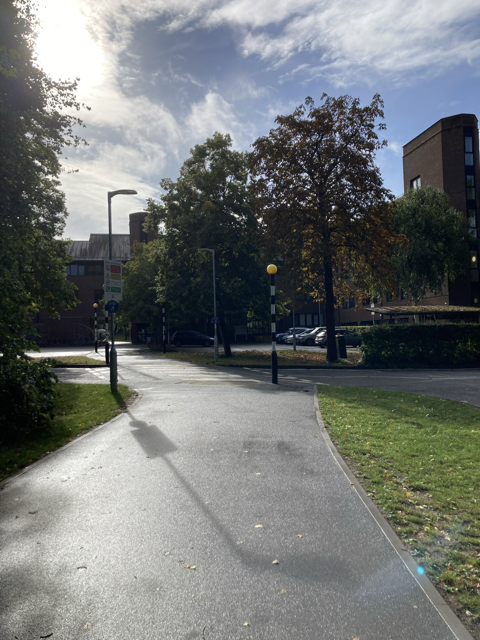
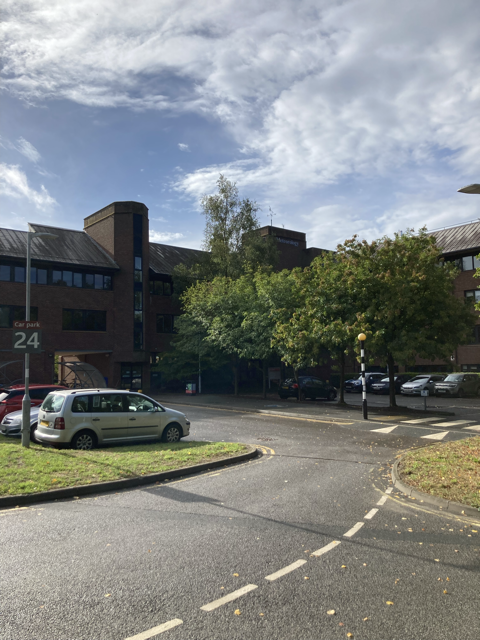
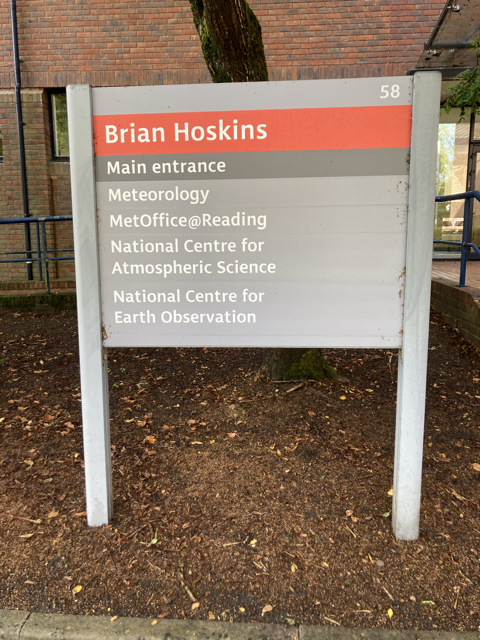
When you first enter the building by the main entrance, you will find yourself in a foyer:
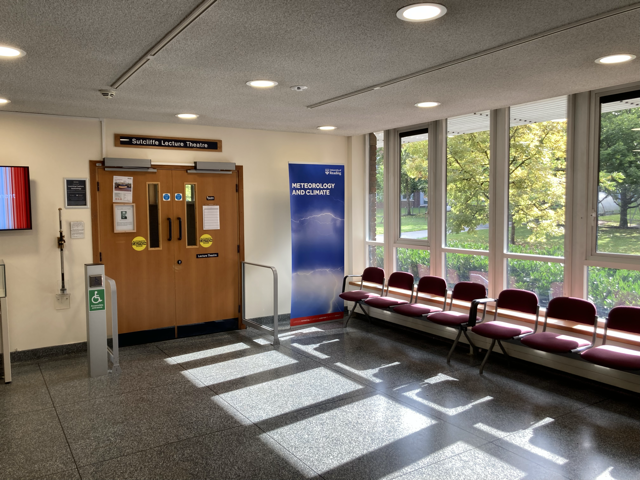
There will be a registration desk here on Monday morning. The doors shown in the photo lead to the Sutcliffe lecture theatre (room GU01), and all of the talks in the programme will be held here.
Posters and tea/coffee breaks will be held in the David Grimes synoptic laboratory (room 1L61) which you can access by going up one flight of stairs (left hand photo below). The view in front of you then looks like the central photo below - walk forward and turn left down the corridor (the entrance to this corridor is visible in the central photo, to the left of the blue chairs). The corridor looks like the right hand photograph, and the synoptic lab is about three-quarters of the way down it, on the left hand side.
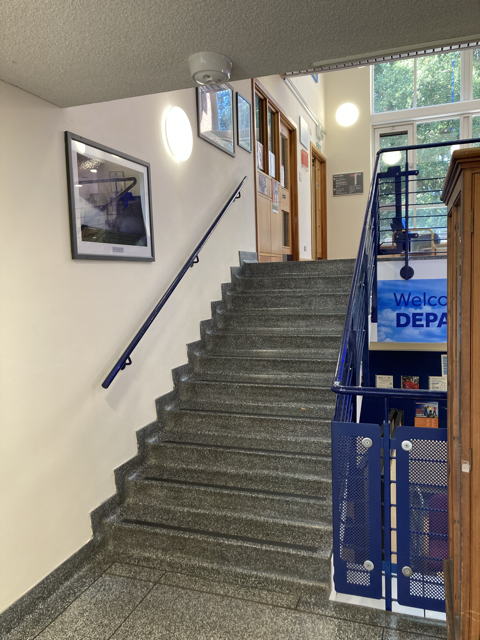
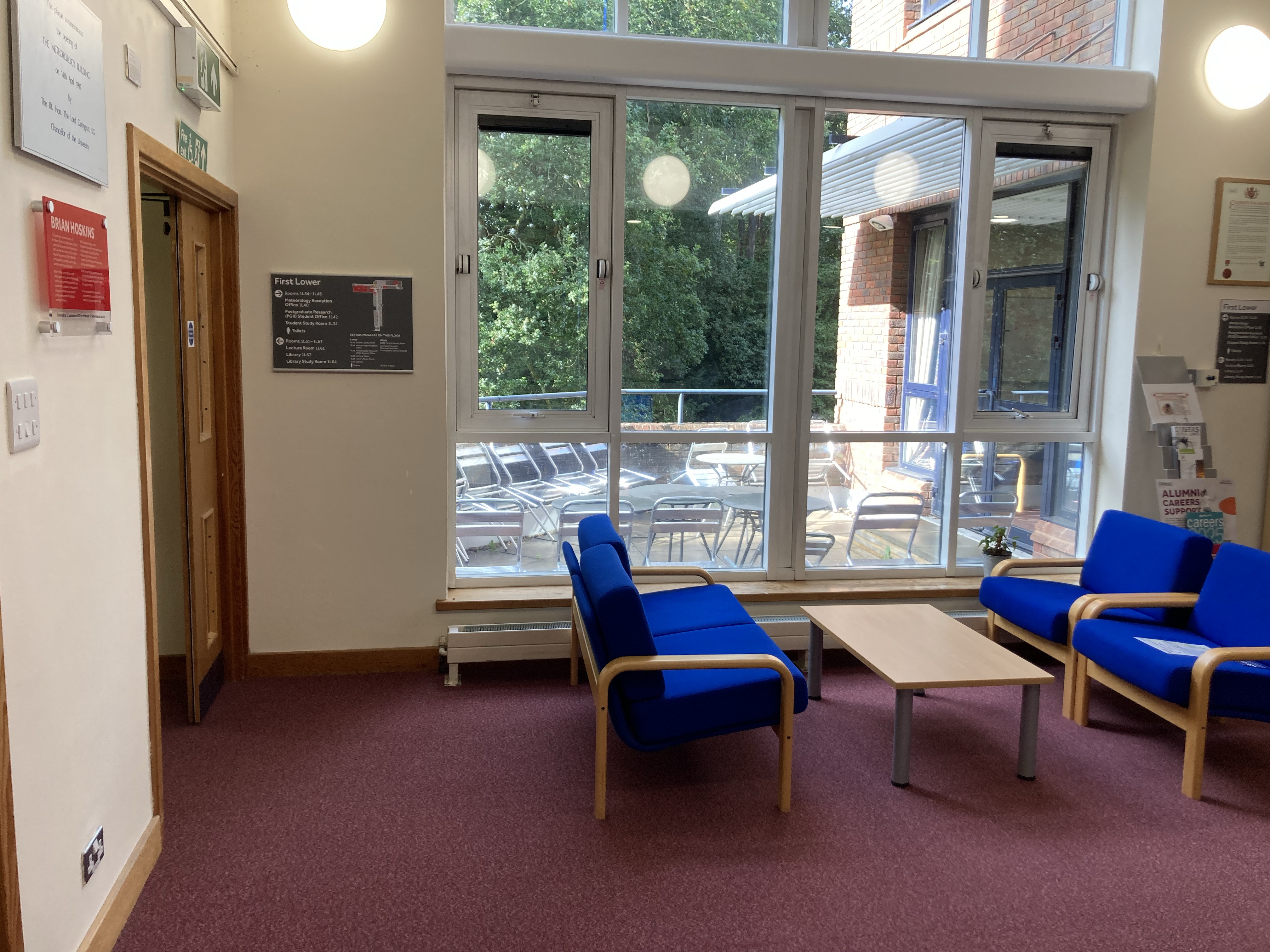
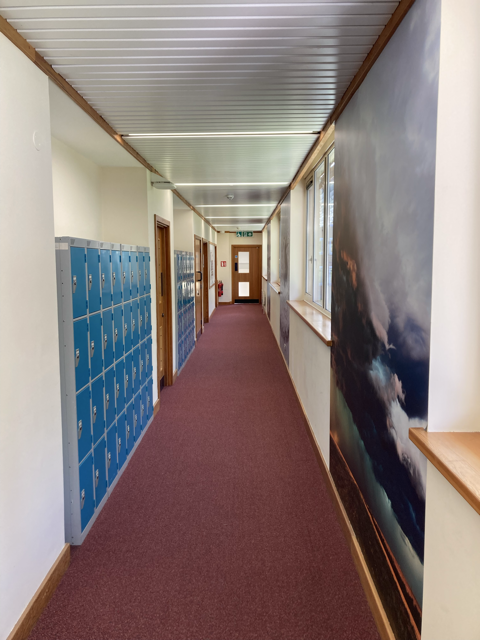
There are signs with maps on each floor. If you get lost somehow, don't hesitate to just ask someone for help.
Toilets can be found close to the main stairwell - go down one floor from the entrance foyer for men's, up one floor for women's. There is an accessible, non-gendered, toilet on the entrance floor.
There are automatic doors into the department and the lecture theatre if you need them; there is also a lift which can be accessed from the foyer, which runs up and down parallel to the main stairwell.
Advice on visiting the UK
Timezone: we are currently on BST.
Current local time in the UK:
Sunrise is currently around 6.30am, sunset around 7.15pm.
Electrical sockets in the UK have 3 pins and look like this. The voltage is 230V AC, the same as it is across most of Europe. Don't forget an adaptor!
Paying for things: UK currency is pounds (£) and pence (p). Card payments are widely accepted even for low value items, although many shops and cafes will also accept cash. Cafes on the university campus are card-only.
VISA and Mastercard is accepted almost universally. Be aware that American Express is less widely accepted in the UK - in particular, Reading Buses do not accept AMEX. Outlets at the University do accept it, as does the co-op grocery shop.
Weather in Reading
Weather data and climatology from our atmospheric observatory:
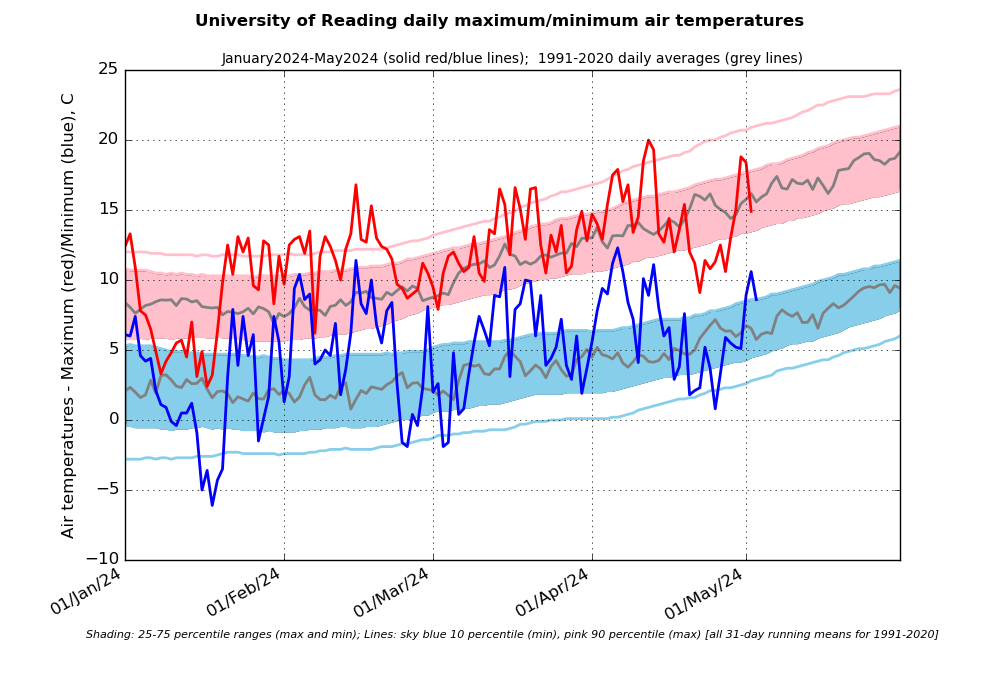
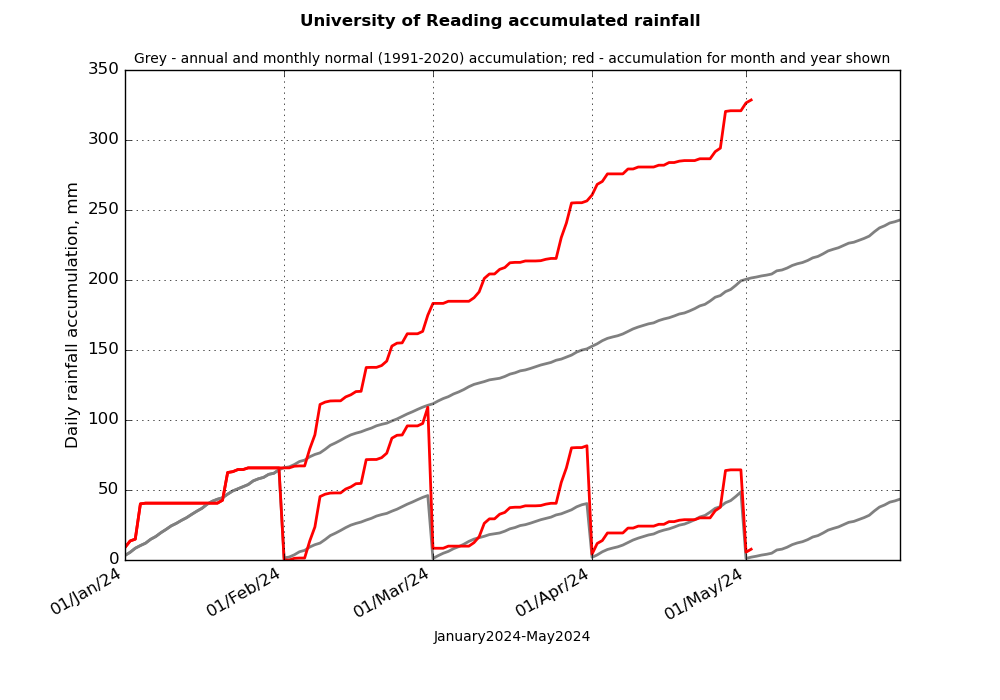
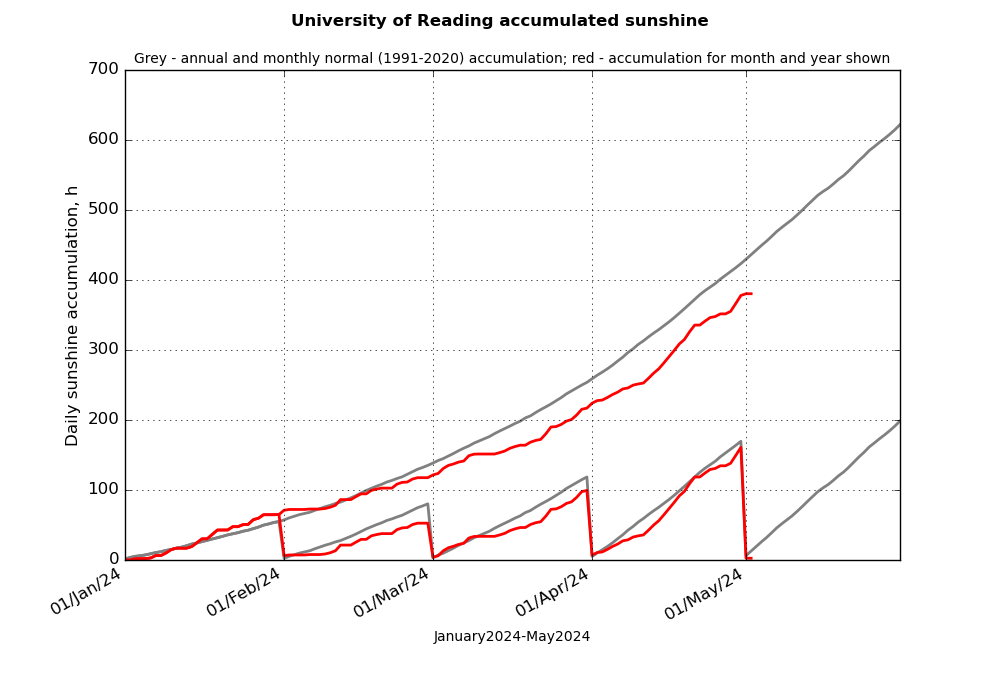
Forecast for the next few days:
Questions? Contact Chris Westbrook or Karina McCusker
Organisers: Chris Westbrook, Karina McCusker, Stefan Kneifel, Dmitri Moisseev, Maximilian Maahn, Nina Maherndl, Paul Ockenfuß
Photographs: Chilbolton 25m antenna in the snow by Allistair Mallett; close up of aggregate snowflake structure by Chris Westbrook